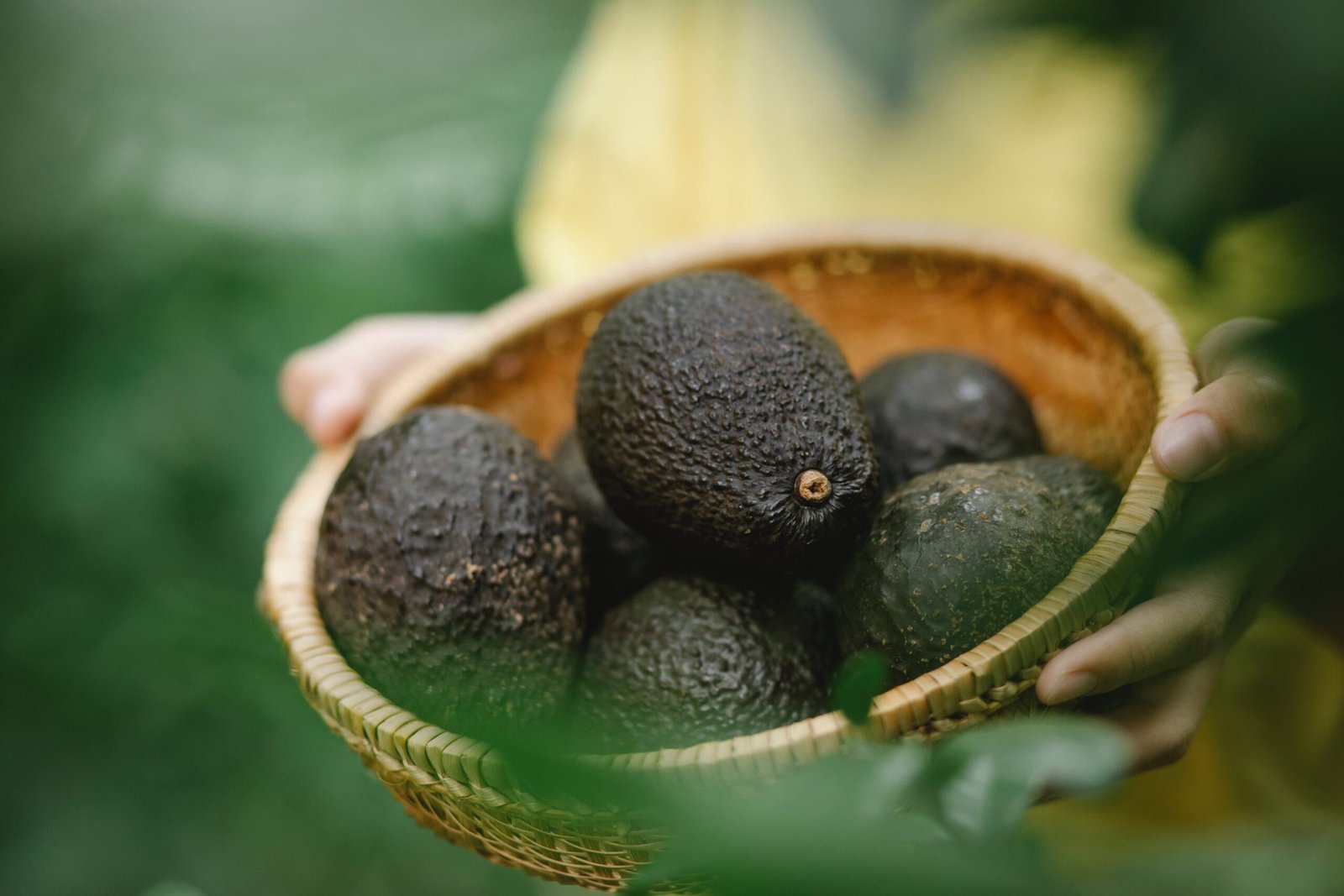
Have you ever considered growing strawberries in a unique and space-saving way? Vertical gardening might just be the answer you’re looking for. This innovative technique allows you to cultivate strawberries vertically, using walls or structures to create a stunning display of greenery and delicious fruit. Say goodbye to traditional gardening methods and discover the joy of growing strawberries with a twist. In this article, we will explore the benefits of vertical gardening and provide you with some simple tips to get started. Get ready to transform your garden and enjoy a bountiful harvest of sweet, juicy strawberries all year round.

Benefits of Vertical Gardening
Utilizing Small Spaces
Vertical gardening is an innovative technique that allows you to maximize your available space effectively. By growing strawberries vertically, you can utilize small areas such as balconies, patios, or even walls to create a lush and productive garden. This is especially beneficial for those living in apartments or houses with limited yard space. With vertical gardening, you can turn any small area into a vibrant and fruitful strawberry patch.
Improved Air Circulation
One of the advantages of vertical gardening is the improved air circulation it provides for your plants. When strawberries are grown in traditional horizontal beds, their foliage can become dense and restrict airflow, leading to increased humidity levels and a higher risk of fungal diseases. By growing strawberries vertically, the plants are spaced apart, allowing air to circulate freely around the leaves and stems. This improved airflow helps to prevent the growth of harmful fungi and promotes the overall health of your strawberry plants.
Reduced Risk of Diseases and Pests
Vertical gardening can also minimize the risk of diseases and pests that commonly affect strawberries. When strawberries are grown on the ground, they are susceptible to soil-borne diseases and pests, such as slugs, snails, and fungal pathogens. By elevating the plants off the ground in a vertical garden, you create a physical barrier that helps protect them from these potential threats. Additionally, vertical gardening makes it easier to inspect and manage your plants, allowing you to spot and address any issues before they become major problems.
Easy Harvesting and Maintenance
One of the great joys of strawberry gardening is the reward of a bountiful harvest. With vertical gardening, harvesting becomes even more convenient and efficient. Since the plants are grown at eye level or above, you no longer have to stoop down or kneel on the ground to pick your strawberries. This saves you time and effort, making the entire process much more enjoyable. Furthermore, vertical gardening simplifies maintenance tasks such as weeding, watering, and pruning. Everything is within easy reach, allowing you to care for your strawberry plants with ease.
Choosing the Right Strawberry Varieties
Low-Hanging Varieties
When selecting strawberry varieties for vertical gardening, it is important to choose low-hanging options. These varieties naturally produce long branches or runners that hang down from the plants. This makes harvesting incredibly easy, as the strawberries are already within reach. Some popular low-hanging strawberry varieties include ‘Alpine’, ‘Quinalt’, and ‘Fragaria vesca’.
Trailing Varieties
Trailing strawberry varieties are another excellent choice for vertical gardening. These varieties have long, spreading branches that cascade down, creating a beautiful and abundant display of strawberries. Trailing varieties are ideal for vertical gardens with taller structures, as they can grow downwards for an extended period without reaching the ground. Consider ‘Roman’, ‘Albion’, or ‘Tristar’ for a stunning trailing strawberry garden.
Everbearing Varieties
For those who want a continuous harvest of strawberries throughout the growing season, everbearing varieties are the way to go. These strawberries produce fruit in multiple flushes, providing you with a consistent supply of delicious berries. When grown in a vertical garden, everbearing varieties can be easily managed and monitored, ensuring a steady stream of strawberries for your enjoyment. Look for varieties such as ‘Ozark Beauty’, ‘Seascape’, or ‘Eversweet’ for an ongoing strawberry harvest.

Preparing the Vertical Garden
Selecting a Suitable Structure
Before you start planting your strawberries, it is crucial to choose a suitable structure for your vertical garden. There are various options available, including trellises, vertical towers, and wall-mounted planters. Consider the size of your space, the weight-bearing capacity of your structure, and the overall aesthetic you want to achieve. Ensure that the structure is sturdy and can provide adequate support for the weight of the plants as they grow and bear fruit.
Ensuring Proper Sunlight
Strawberries require at least six hours of direct sunlight each day to thrive and produce abundant fruit. When setting up your vertical garden, ensure that it is placed in an area that receives ample sunlight. Take note of any nearby buildings, trees, or structures that may cast shadows and obstruct the sunlight. If you have limited access to direct sunlight, consider installing grow lights to supplement the natural light.
Creating a Support System
To successfully grow strawberries vertically, you must create a support system that will keep the plants upright and secure. This can be achieved by installing wire mesh or netting against the structure, allowing the strawberry plants to be trained vertically as they grow. Alternatively, you can use hanging pots or pockets designed specifically for vertical gardening. These containers provide individual compartments for each strawberry plant, preventing tangling and allowing for easy maintenance.
Soil and Fertilizer
Using High-Quality Potting Mix
Choosing the right soil for your vertical strawberry garden is essential for the health and productivity of your plants. Opt for a high-quality potting mix specifically formulated for containers. This type of soil is lightweight, well-draining, and enriched with organic matter, providing a perfect balance of moisture retention and aeration for strawberries. Avoid using garden soil, as it can be heavy and compact, leading to poor drainage and root rot.
Understanding Nutrient Needs
Strawberries have specific nutrient requirements to grow and produce abundant fruit. Before planting, it is crucial to understand the nutrient needs of strawberries and provide them with the necessary elements. Nitrogen, phosphorus, and potassium are the primary macronutrients that strawberries require. Additionally, strawberries benefit from micronutrients such as magnesium, iron, and zinc. Incorporate a slow-release fertilizer into the potting mix, and monitor the plants for any signs of nutrient deficiency or excess.
Applying Organic Fertilizers
To ensure the health and sustainability of your vertical strawberry garden, consider using organic fertilizers. Organic fertilizers release nutrients slowly, providing a long-lasting and sustainable source of nourishment for your plants. Examples of organic fertilizers suitable for strawberries include compost, aged manure, worm castings, and seaweed extracts. These natural fertilizers not only promote the growth and productivity of your strawberries but also improve the overall soil quality and ecosystem of your garden.

Planting Techniques
Starting from Seeds
While starting strawberries from seeds can be more time-consuming, it is a cost-effective way to grow a variety of strawberry plants in your vertical garden. Begin by sowing the seeds in small containers or seed trays, ensuring they are watered regularly and placed in a warm and sunny location. Once the seedlings have developed several true leaves, they can be transplanted into individual pots or pockets in your vertical garden. Be patient during the germination and growth process, as strawberries often take several weeks to establish themselves.
Transplanting Seedlings
If you prefer a quicker start to your vertical strawberry garden, consider purchasing young seedlings from a nursery or garden center. These seedlings are already several weeks old and are more resilient to transplant shock. Before planting, gently tease apart any tangled roots and place each seedling into its own pot or pocket in the vertical garden. Firmly press the soil around the roots to ensure good contact and water thoroughly.
Growing from Runners
Growing strawberries from runners is a common and efficient method for expanding your vertical strawberry garden. Runners are long, thin stems that develop from the main strawberry plant and produce new plantlets at the nodes. To propagate strawberries from runners, allow the plantlets to establish roots naturally while still attached to the mother plant. Once the plantlets have formed a strong root system, carefully detach them from the runner and transplant them into individual pots or pockets in the vertical garden.
Watering and Irrigation
Finding the Right Balance
Proper watering is crucial for the success of your vertical strawberry garden. Strive to find a balance between under-watering and over-watering, as both extremes can be detrimental to the plants. Monitor the moisture content of the soil regularly and adjust your watering routine accordingly. Ensure that the soil feels slightly moist but not waterlogged. Remember that strawberries have shallow root systems, so frequent but shallow irrigation is preferable to infrequent deep watering.
Drip Irrigation Systems
To simplify and automate the watering process, consider installing a drip irrigation system in your vertical garden. Drip irrigation delivers water directly to the roots of the plants, minimizing wastage and ensuring that each strawberry plant receives an adequate water supply. This efficient watering method also helps to avoid wetting the foliage excessively, reducing the risk of fungal diseases. With a timer and adjustable flow rates, you can easily customize the watering schedule to accommodate the specific needs of your strawberry plants.
Mulching and Water Retention Methods
Mulching is a valuable technique for conserving moisture in your vertical strawberry garden. Apply a layer of organic mulch, such as straw or wood chips, around the base of each plant. This mulch acts as a protective barrier, reducing evaporation and maintaining soil moisture levels. Additionally, mulching helps to suppress weeds, regulate soil temperature, and prevent soil erosion. Combined with efficient watering practices, mulching can significantly enhance the water-retention capabilities of your vertical garden.
Managing Pests and Diseases
Preventing Common Pests
Like any other garden, vertical strawberry gardens are also susceptible to pests. Common pests that can affect strawberries include aphids, slugs, snails, and spider mites. To prevent these pests from causing significant damage, regularly monitor your plants for any signs of infestation. Remove any weeds or debris that could provide shelter for pests, and consider using natural pest control methods such as companion planting or introducing beneficial insects. In severe cases, organic pesticides specifically formulated for strawberries can be used as a last resort.
Controlling Fungal Diseases
Fungal diseases, such as gray mold (Botrytis cinerea) and powdery mildew (Podosphaera aphanis), can pose a threat to your vertical strawberry garden. Maintain good airflow around your plants, as stagnant air can lead to increased humidity and create favorable conditions for fungal growth. Avoid overhead watering and wetting the foliage excessively, as this can promote the development and spread of fungal spores. If necessary, apply organic fungicides to control the spread of fungal diseases, following the instructions carefully.
Natural Remedies and Companion Planting
In addition to commercial organic pest control products, there are several natural remedies and companion plants that can help manage pests and diseases in your vertical strawberry garden. For example, planting marigolds or nasturtiums around your strawberries can deter aphids and other harmful insects. Similarly, planting aromatic herbs such as basil or mint can help repel pests. Additionally, applying organic sprays made from ingredients such as garlic, neem oil, or soap can provide a natural barrier against pests and diseases.
Pruning and Training
Encouraging Vertical Growth
To maximize the space in your vertical strawberry garden, it is essential to encourage vertical growth in your plants. Pruning and training techniques can help achieve this. Remove any dead or yellowing leaves, as well as any runners that are not needed for propagation. This will redirect the plant’s energy towards fruit production and vertical growth. Gently tie or secure the stems of the strawberry plants to the support structure, ensuring that they are trained upwards to optimize space and sunlight exposure.
Removing Runners and Suckers
Strawberry plants are notorious for their vigorous production of runners and suckers. While they are necessary for the propagation of additional plants, excessive runners and suckers can overcrowd your vertical garden and divert energy away from fruit production. Regularly remove any unwanted runners and suckers to maintain the overall health and productivity of your strawberry plants. Simply snip them off using clean and sharp pruning shears, taking care not to damage the main plant.
Supporting and Securing Plants
As your strawberry plants grow and develop, it is essential to provide adequate support and ensure that they are secured properly. As the weight of the fruit increases, the branches may become top-heavy and prone to bending or breaking. Use soft ties or flexible plant clips to secure the stems to the support structure, preventing them from sagging or leaning. Regularly check and adjust the supports as needed to maintain an upright and stable structure for your flourishing strawberry plants.
Harvesting and Maintenance
Knowing When to Harvest
Harvesting strawberries at the right time is crucial for optimal taste and flavor. Strawberries are typically ready for harvest when they are fully red and firm. Gently lift the leaves to expose the ripening berries, and pick them by gently pinching the stem with your fingers or using small pruning shears. Avoid harvesting strawberries when they are still partially green or white, as they will not have reached their full sweetness. Harvesting should be done regularly to encourage continued fruit production.
Proper Strawberry Handling
When handling strawberries, it is essential to be gentle and avoid bruising or damaging the delicate fruit. Hold the strawberries by their stems, being careful not to squeeze or crush them. If possible, harvest strawberries in the cool morning hours to prevent heat stress and maintain their firmness. Once harvested, store the strawberries in a cool place or in the refrigerator to prolong their shelf life and preserve their quality.
Regular Cleaning and Inspections
Regular cleaning and inspections are essential for maintaining the health and vitality of your vertical strawberry garden. Remove any fallen leaves, spent flowers, or debris from the garden to prevent the buildup of pests and diseases. Inspect the plants for any signs of stress, nutrient deficiency, or disease, and take necessary action promptly. Regularly check the support structure and ties, ensuring they are secure and in good condition. By regularly maintaining and cleaning your vertical garden, you can create an environment that promotes the long-term success of your strawberry plants.
Tips for Successful Vertical Strawberry Gardening
Regular Monitoring and Adjustments
Successful vertical strawberry gardening requires regular monitoring and adjustments. Keep an eye on the health and growth of your strawberry plants, checking for any signs of pests, diseases, or wilting. Adjust your watering, fertilizing, and pruning routines as necessary to meet the specific needs of your plants. By closely monitoring your vertical garden, you can promptly address any issues and ensure the continued success of your strawberry plants.
Choosing the Right Growing Season
Choosing the right growing season is crucial for the success of your vertical strawberry garden. Strawberries thrive in cool weather and are typically planted in early spring or fall. Avoid planting them during the hottest summer months, as excessive heat can stress the plants and reduce fruit production. Research the specific planting and harvesting seasons for the strawberry varieties you have chosen, and plan accordingly to optimize the growth and yield of your vertical garden.
Creating a Fertilizing Schedule
Establishing a fertilizing schedule is essential for providing your strawberry plants with the necessary nutrients throughout the growing season. Consider creating a schedule based on the specific nutrient requirements of strawberries and the recommended application rates of your chosen organic fertilizers. Divide the fertilizing sessions into multiple smaller applications, ensuring a consistent and gradual release of nutrients. Regularly monitor the plants and adjust the fertilizing schedule based on their overall health and growth.
Sharing and Exchanging with Other Gardeners
Vertical strawberry gardening is not only a rewarding hobby but also a fantastic opportunity for community engagement. Connect with other strawberry gardeners in your area and share your experiences, tips, and harvests. Exchange strawberry plants or runners with fellow gardeners to diversify your vertical garden and try out new varieties. Participating in local gardening groups or forums can provide valuable insights and foster a sense of camaraderie among passionate strawberry growers.
In conclusion, vertical gardening offers numerous benefits for growing strawberries. By utilizing small spaces, improving air circulation, reducing the risk of diseases and pests, and enabling easy maintenance and harvesting, vertical gardening provides an innovative and efficient way to grow delicious strawberries. By choosing the right strawberry varieties, preparing the vertical garden properly, understanding soil and fertilizer requirements, employing suitable planting techniques, implementing effective watering and irrigation methods, managing pests and diseases, conducting appropriate pruning and training, and practicing regular maintenance, you can enjoy a successful vertical strawberry garden. Follow the tips for successful vertical strawberry gardening, including regular monitoring and adjustments, choosing the right growing season, creating a fertilizing schedule, and engaging with other gardeners, to enhance your strawberry-growing experience and reap the rewards of your own bountiful harvest.Embrace the versatility and creativity of vertical gardening and transform any small space into a thriving strawberry paradise with a twist.





